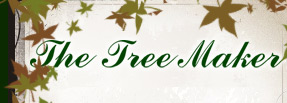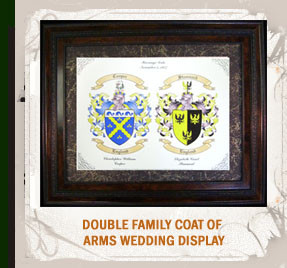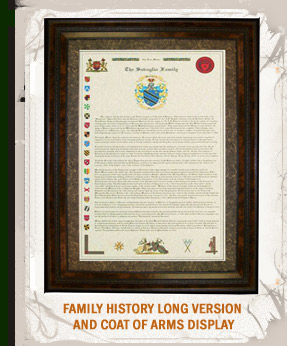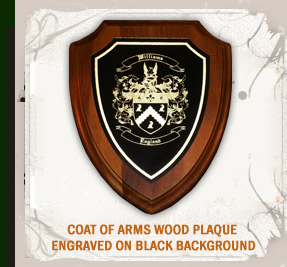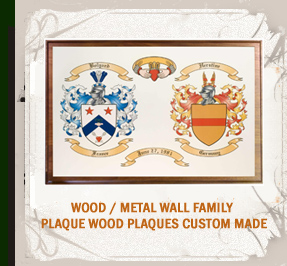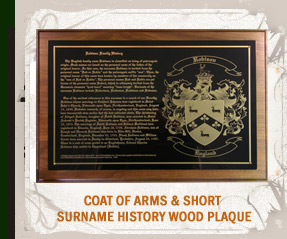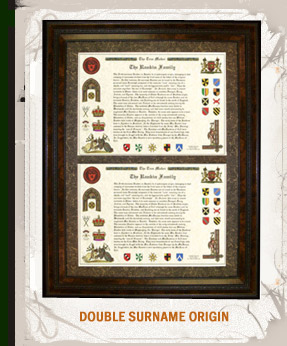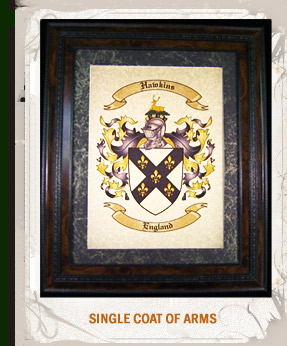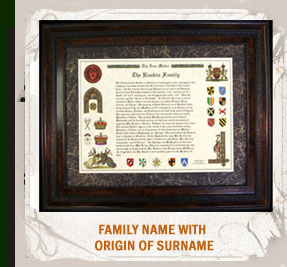Display your Scottish coat of arms or your Scotland heritage
Early
Scottish History: Scotland is one of the oldest nations
of Western Europe. In its formation Gaels, Picts, Scots, Britons,
Anglo-Saxons, and Norsemen all took part. The Gaels belonged to
a branch of the Celtic peoples that reached Scotland from Central
Europe in the sixth century B.C. There they found the Picts, a people
of mysterious origin who may have come from the Continent as early
as 1000 B.C. The Gaels and Picts joined in defying the Romans when
these world conquerors began their invasion of northern Britain
about 80 A.D. Although the Romans succeeded in getting as far north
as the central lowlands, they never succeeded in subduing the fierce
barbarians, and early in the fifth century the Roman legions were
finally withdrawn. All of Britain then became the prey of new invaders
and new settlers.
The
first of the colonies in western Scotland was Dalriada, founded
early in the sixth century by Irish Celts called Scots in what is
now Argyll County. The kingdom of Strathclyde arose in the seventh
century, when Britons driven northward from England
by the invading Anglo-Saxons settled in the Clyde Valley. The Teutonic
migration reached southeastern Scotland in the sixth century, when
the Anglo-Saxons established Bernicia, later part of Thekingdom
of North-Ubria. Although the Gaels and Picts maintained their hold
over Pictavia, the Norsemen extended their control along the northern
coast and on the three outlying archipelagoes between the ninth
and eleventh centuries.
Scotland had
its first contact with Christianity early in the fifth century,
when the British missionary St. Ninian converted the southern Picts.
During the latter part of the sixth century the Irish missionary
which he had established on Iona in the Hebrides.
Scottish
Medieval Period: The first political union in Scotland
was achieved in 844, when Pictavia and Dalriada were united under
Kenneth MacAlpin as Kenneth I. The strong kingdom thus formed against
encroaching Norsemen and Anglo-Saxons was known as Alba until early
in the thirteenth century, when it was named Scotland. In 1018,
Malcolm II, after defeating the Anglo-Saxons, annexed the Lothian
district of Northumbria, thus extending the southern frontier of
Scotland to approximately its present limit. Most of the mainland
country was finally united in 1034, when Duncan I, King of Strathclyde,
succeeded Malcolm II, his maternal grandfather.
In 1040 his
general Macbeth killed Duncan, who despite Shakespeare's villainous
characterization, ruled competently until overthrown in 1057 by
Duncan's son, Malcolm III. Because of the influence of Malcolm's
English-born queen, Margaret, the central lowlands in particular
became an English-speaking region, with a culture modeled on that
of the Anglo-Saxons to the south. Early in the twelfth century Malcolm's
son, David I, not only introduced feudalism but developed a ruling
class whose interests differed greatly from those of the Celtic
masses of Scotland. Although some of the clan chieftains became
vassals, the majority of the King's liegemen were Anglo-Normans
who, in doing homage for their land, held most of the southern peasants
as serfs.
Finally, in
1174, when William the Lion of Scotland was captured on his invasion
of northern England, he was forced to sign the Treaty of Falaise,
whereby he not only became the vassal of Henry II but also placed
the entire Scottish Kingdom under the lordship of the English Crown.
The Scots did not regain their independence until 1189, when Richard
I of England sold them their freedom for funds with which to finance
the Third Crusade.
The consolidation
of Scotland was practically completed during the reign of Alexander
III, when the Scots defeated the Norsemen in 1263 and thus gained
control of the Hebrides and the coastal plain of the Highlands region.
But the Orkneys and Shetlands were not acquired until 1472, when
Norway transferred them to the Scottish Crown.
Scottish
War of Independence: Upon the mysterious death of the young
Norwegian Princess Margaret, granddaughter and heiress of Alexander
III, thirteen claimants to the throne appeared. The strongest were
John de Baliol and Robert de Bruce. Edward I of England arbitrated
the claim, and when he awarded the crown to Baliol in 1292, the
new monarch had to swear fealty to him. Four years later, goaded
into rebellion by Edward's oppressive measures against the
Scots, Baliol made an alliance with France.
In protest, the English invaded Scotland in 1296, and the massacre
of the citizens of Berwick was the prelude to a ruthless war that
resulted in Baliol's abdication.
Although Scotland
was now under an English military government, Sir William Wallace,
who won one of the greatest victories in Scottish history at the
Battle of Stirling Bridge in 1297, renewed the popular revolt. A
year later, however, the Scots were defeated at Falkirk, and Wallace
was eventually betrayed to the English and executed in 1305. In
1306, Robert Bruce, grandson of the original candidate for the Scottish
throne, was crowned as Robert I. After seven years of guerrilla
warfare Bruce routed Edward II's army at the Battle of Bannockburn
in 1314.
In 1333, during
the reign of Bruce's son, the incompetent Daved II, English
forces scored a great victory at Halidon Hill and made Edward de
Baliol their vassal king. Baliol ceded almost half of the southern
uplands to England's Edward III, and it was not until 127
years later, during the reign of James II, that the Scots finally
expelled the English from the southeastern counties.
Rise
of the House of Stuart: The death of the childless David
II in 1371 brought the first of the Stuart dynasty to the Scottish
throne - Robert II. The ablest of his successors was James
I, who for about eighteen years was a prisoner of England's
Henry IV and Henry V. When finally released and crowned in 1424,
James initiated reforms that to a certain extent curbed the power
of the feudal lords, and brought about commercial, agricultural,
and legal improvements. He also established a two-chamber Parliament
similar to that of England, but retained the Council of the Lords
of the Articles to function between sessions.
Scotland took
part in England's Wars of the Roses on the side of the House
of Lancaster and recognized the claim of Perkin Warbeck, who attempted
to oust the Tudor King Henry VII. In 1497, however, James IV concluded
a truce with England and six years later he obtained English recognition
of an independent Scottish crown by marrying Henry's daughter
Margaret. Although this "union of the thistle and the rose"
led a century later to the union of the Scottish and English crowns,
it did not prevent the outbreak of hostilities when Scotland once
again allied itself with France. After Henry VIII went to war with
France, James invaded northern England and was defeated and slain
in the Battle of Flodden Field in 1513.
James V tried
to improve the lot of the common Scottish people when he assumed
control in 1528. He also protected the Roman Catholic Church, refusing
to follow the example of his uncle Henry VIII in severing all ties
with the Papacy and founding a national church like the Church of
England. The Scottish alliance with France was strengthened through
the King's two marriages, the first to a daughter of Francis
I, and the second to Mary of Guise.
The child of
James's second marriage was the ill-fated Mary Stuart, who
became queen one week after the English had defeated her father
in the Battle of Solway Moss in 1542. her reign was a particularly
turbulent one because of the attempt of her Catholic followers to
place her on the English throne, which the Protestant-supported
Elizabeth I ascended in 1558. The story of her unfortunate marriages,
of her forced abdication in favor of her infant son, and of the
nineteen years she spent in English prisons before her execution
is told in her biography {Mary Queen of Scots}.
During the regency
of Mary of Guise, the short reign of Mary, Queen of Scots, and the
minority of James VI the Reformation gained momentum in Scotland.
John Knox let this Reformation. He had been influenced during his
exile on the Continent by the teachings of John Calvin. In 1560
Knox drew p a Confession of Faith that paved the way for the establishment
of the church government and doctrine known as Presbyterianism.
Union
of Scotland and England: Mary's ambitions were fulfilled
in her son, who acceded to the English throne as James I on Elizabeth's
death in 1603. In his attempt to establish a uniform church government
in both Scotland and England, James initiated the long struggle
between the Church and the Crown that was carried on by all of his
Stuart successors. His object was to substitute the episcopacy {government
by bishops appointed by the king} for the presbytery {government
by democratic assemblies of ministers and elders}. The struggle
reached its height under Charles I, who, with thee aid of Archbishop
Laud, continued to impose the rites of the Anglican Church despite
the signing of the National Covenant, by which the Scottish Presbyterians
pledged defense of their faith.
The indecisive
Bishops' Wars of 1639-1640 were followed by the English Civil
War between the King and the Puritan-dominated Parliament. In the
Civil War the Scots sided with the Puritans, helping Cromwell to
win the Battle of Marston Moor in 1644, but five years later, outraged
by the execution of Charles I, they defied the Commonwealth by recognizing
his son, Charles II. After Charles II had been restored to the English
throne in 1660, Charles broke faith with the Scots in regard to
his promise of Liberty of conscience, and the Covenanters'
uprisings, which followed in the wake of Restoration attempts to
re-impose the episcopacy, continued until suppressed at the Battle
of Bothwell Bridge in 1679.
The Scots did
not achieve freedom from royal absolutism until the reign of William
III. The crowning of William and his wife Mary, a daughter of James
II, was accompanied in 1689 by the enactment of the Declaration
of Rights and the passage of the Act of Toleration, which restored
religious freedom to the realm. Finally, in 1707, five years after
Queen Anne came to the throne, both the Scottish and English Parliaments
accepted the treaty, which permanently united the two countries.
Thenceforth the history of Scotland was interwoven with that of
Great Britain, the hopes of the Stuarts for ousting Anne's
Hanoverian successors having twice come to no avail, in the Jacobite
uprising of 1715 and in the overthrow of the Young Pretender in
1746. The British union has had both economic and political advantages,
especially since the Scottish Reform Acts of 1832 and 1885 extended
the franchise and increased Scotland's representation in the
House of Commons.
Of course much
has changed since then and the nation of Scotland is a thriving
country proud of its heritage. Scotland is a place that you would
be proud to display your Scottish genealogy, family coat of arms
or surname history.
